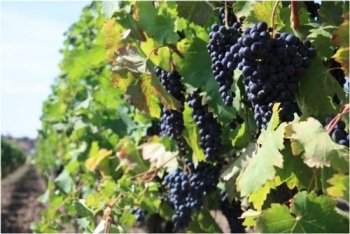Jun 30 2016
UPM researchers are studying the effects of climate change on Spanish vineyards and they suggest adopting adaptation choices of crops in order to make premium wines more globally competitive.

A new study carried out by researchers from Universidad Politécnica de Madrid (UPM), in collaboration with the Coordinator of Farmers and Ranchers of Spain (COAG) has explored various bioclimatic indices in grapevine regions of Spain that help establish the quantity of grapes produced and their quality. These two factors are essential to assess the competitiveness of vineyard production.
Results show that to deal with a foreseeable increase in temperature and a decrease in rainfall, new adaptation measures of crops to the new conditions will be necessary to keep competitiveness. According to researchers, these measures should be applied to crops of southern half of the peninsula. Besides, experts recommend individual actions of farmers supported with political actions.
Spain is the country with the largest surface area dedicated to grapevines with over 1 million of hectares. Besides, Spain is the second largest exporter of wine after Italy, and it has become the third-largest wine producer in Europe after France and Italy. Wine production in Spain dates back to the 1200s BC and it is an activity with remarkable economic and cultural impacts.
In this context, researchers from Research Centre for the Management of Agricultural and Environmental Risks (CEIGRAM), a joint research centre of UPM, State Agency for Agricultural Insurance (ENESA) and Agromutua-MAVDA, are studying how to guarantee the competitiveness of this sector in a new context as a consequence of climate change projections for the coming years.
The climate of the regions defines the typicality of wines and grape production strategies. Because of this dependency, the consequences of climate change must be assessed in both grape quality and productive potential of the vineyard, since we know that climate change affect on the economic performance of the farm as well as the capacity of the wine sector to compete in the global market.
The climate change projections in 50 years time indicate increases in annual average temperatures, a decrease in precipitation and a large increase in heat waves and drought in the Iberian Peninsula. In order to anticipate this problem of grape growing in the coming years, researchers need to jointly study the climate information and the geographical study of the major indexes of zoning wine.
As a result, the study of bioclimatic indexes describes the “complex potential consequences for the vineyard” for the 56 protected designation of origin of wines in Spain, explains the researcher Ana Iglesias. The good news for specific zones is that increases of temperature lengthens the growing season of the plant and reduces the risk of frost, improving its performance and the quality of grapes in areas with high acidity wines due to lack of ripening.
However, if the temperature rise is excessive the growing period shortens and this has a negative effect on the berry quality since it causes overripeness and excess of sugars. According to researchers, "from the point of view of quality, the future conditions are a big challenge for vineyards in Valles del Tajo, Guadiana, Guadalquivir and Southeastern coast of Spain. The difficulty to produce high quality wines in other producing areas, such as Douro Valley, Valley of Ebro, Galicia and Catalonia, might be minor, but it needs to change or adapt the crop to the new climate”. Besides, researchers also highlight the difficulty of maintaining irrigation in most areas since it is almost unthinkable increasing the irrigated area.
Ultimately, the ability to adapt depends, of course, on the individual actions of the producers, but UPM researchers also recommend promoting political actions to relax production criteria and to optimize the relationship between climate and vineyard.